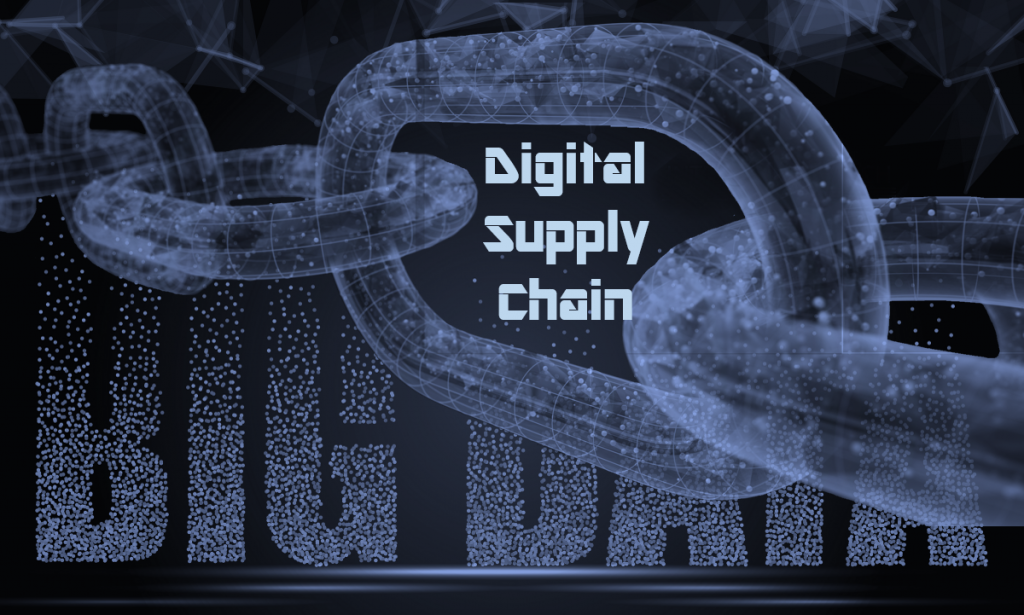The modern supply chain is mind-boggling. Multinational enterprises deal with a dizzying array of paperwork involving procurement deals, purchase orders, shipping data, etc. Much of that “paperwork” is now done electronically, which is why consultants are increasingly touting the benefits of the digital supply chain. Trevor Miles (@milesahead), Vice President of Thought Leadership at Kinaxis, reminds us, however, “Digitization is not the same as digital transformation.”[1] To emphasize the difference, he cites a comment he received from Tricia Wang (@triciawang), a self-described Tech Ethnographer & Sociologist. She writes, “A lot of companies treat digital as if they are ‘doing digital’ – this is ‘digitization’ at its worst – as if it’s some checklist of things to do. It’s very transactional, and people are so busy doing digital they don’t even know WHY they are doing it in the first place! Whereas [some companies] embrace ‘being digital’ — this is ‘digital transformation’ at its best — it’s a total paradigm shift in the culture and operations — it’s not just about buying the latest digital tool, but about creating a new system, new cadence, new mindset.” This begs the question: Is the digital supply chain about digitization or digital transformation?
Supply chain digitization
I suspect the answer to the question posed above is: Both. As more transactions become electronic, digitization is inevitable. I disagree with Wang that supply chain professionals are so busy “doing digital” they don’t “know WHY they are doing it.” The “why” is pretty clear. Digitization helps deal with myriad transactions in a timely fashion and, in many cases, relieves humans from having to complete tedious tasks that are error-prone when done manually. David Pereira, founder and CEO of Trinity Logistics, USA Inc., writes, “You’ve probably questioned what the difference is between a ‘digital supply chain’ and a ‘supply chain’, be that as it may, there is not one appointed answer. Generally speaking, supply chain professionals will likely agree that a digital supply chain is essentially summed up as this: data is collected from various sources along the supply chain and integrates that data to improve and reshape supply chain processes.”[2] What Pereira describes is what Miles and Wang would call digitization.
The staff at IT Online report, “Companies are increasingly looking to digitize their supply chains by implementing a cloud-based digital platform that optimizes traditional ERP processes while integrating new exponential technologies.”[3] They go on to note, “A traditional ERP simply cannot keep pace with the rate of change and the need to innovate and optimize quickly, accurately, and cost-effectively. Cloud-based platforms that enable real-time decision making based on accurate big data — generated through traditional processes as well as the growing prevalence of sensors — and predictive analytics powered by machine learning is changing the way companies approach supply chain management.” In other words, they agree with Miles that digitization and digital transformation are not the same thing. Digitization is the gateway to digital transformation. Pereira notes, “Integrating new age technology can not only build a smarter supply chain but allow businesses to implement more visibility and project higher goals in digital transformation.” The IT Online staff adds, “Placing a digital core at the center of all supply chain management processes further enables expansive ‘what-if’ and scenario planning to identify opportunities for meeting potential market demand with high levels of service at low cost.”
Supply chain digital transformation
As Wang observed, digital transformation requires “creating a new system, new cadence, new mindset.” That new system probably has at its digital core a cognitive platform, like the Enterra Supply Chain Intelligence System™. Cognitive platforms can handle mundane data tasks as well provide decision-makers with actionable insights mined from today’s data rich supply chain environment. PJ Jakovljevic, a principal analyst at Technology Evaluation Centers, writes, “Today’s trends are about business growth through digital transformation. Replacing the manual data gathering and cadence-based periodical strategy of the past is the current need for real-time information that keeps strategies on track and capable of responding to evolving circumstances. With today’s treatment of data, the supply chain has never been better fit to suit evolving customer needs.”[4] Analysts from Shipchain add, “Understanding the future of the digital supply chain is essential to success. We must embrace the possibilities of Big Data, the Internet of things, blockchain technology, predictive analytics, and the growing unrest that these things bring to the industry.”[5]
Obviously, embracing emerging technologies is part of digital transformation; but, as Wang stressed, adopting technology is not the same thing as transforming. Digital transformation involves implementing new technologies to create a new way of doing business. Shipchain analysts insist, “The future of the digital supply chain is entirely data-driven and analytics-powered, reports Accenture. Supply chain operations need to adapt existing supply chain systems to integrate with modern analytical capabilities. The IoT serves as a jumping off point, and supply chain executives can use the data for profound improvements. The connections between supply chains and end-users include manufacturers, logistics providers, retailers, distributors, service partners, suppliers, customers and the customers of business-to-business partners.” Advanced analytics play a significant role in ensuring business is done in a new way. Lora Cecere (@lcecere), founder of Supply Chain Insights, believes the supply chain should be front and center on the business landscape. “The supply chain IS Business,” she insists, “not a department within a business.”[6] Advanced analytics help ensure the supply chain gets its place in the sun.
Good analytics begin with good data. Shipchain analysts explain, “Access to data does not necessarily amount to ‘good’ data. Anything can track data, but using data properly to make a real and meaningful improvement in the supply chain is hard. Newer technologies, like predictive analytics, can leverage data, verify its validity, and make recommendations. Of course, the best analytics software will still sell if inaccurate data is part of the equation. This is where blockchain can make a significant impact. Blockchain technology in the future of the digital supply chain can be leveraged to self-validate and achieve 100-percent, end-to-end visibility, and traceability in all connected supply chain systems.” Achieving 100 percent end-to-end visibility currently remains aspirational. Cognitive platforms can help decision-makers who are constantly confronted with ambiguous situations. Digital transformation simply can’t be done without embracing cognitive technologies in one form or another.
Concluding thoughts
Shipchain analysts conclude, “Avoiding the future of the digital supply chain is impossible.” If true, and I suspect it is, moving from digitization to digital transformation is a necessity for future supply chain success. The IT Online staff reports, “The business outcomes can be transformative: reducing days of inventory by 10% to 12%, reducing revenue loss by 10% to 15%, cutting total logistics costs by 10-12%, and reducing supply chain planning costs by up to 5%. Critically, digitizing the supply chain enables companies to run simpler and shift focus more toward innovation — both in terms of improving existing processes as well as developing entirely new business models and revenue streams.”
Footnotes
[1] Trevor Miles, “Let’s be clear: Digitization is not the same as Digital Transformation,” Kinaxis Blog, 8 December 2017.
[2] David Pereira, “No Trend to Ignore: Supply Chain’s Digital Shift,” Global Trade, 28 March 2018.
[3] Staff, “Digitise the supply chain in an exponential world,” IT Online, 1 February 2018.
[4] PJ Jakovljevic, “Digital Transformation and the Supply Chain,” Supply Chain Brain, 6 February 2019.
[5] Staff, “The Future of the Digital Supply Chain: IoT, Big Data, Blockchain, Predictive Analytics, and More,” Shipchain, 25 June 2019.
[6] Lora Cecere, “Sage advice? Only for turkeys.” eft, 1 February 2013.





